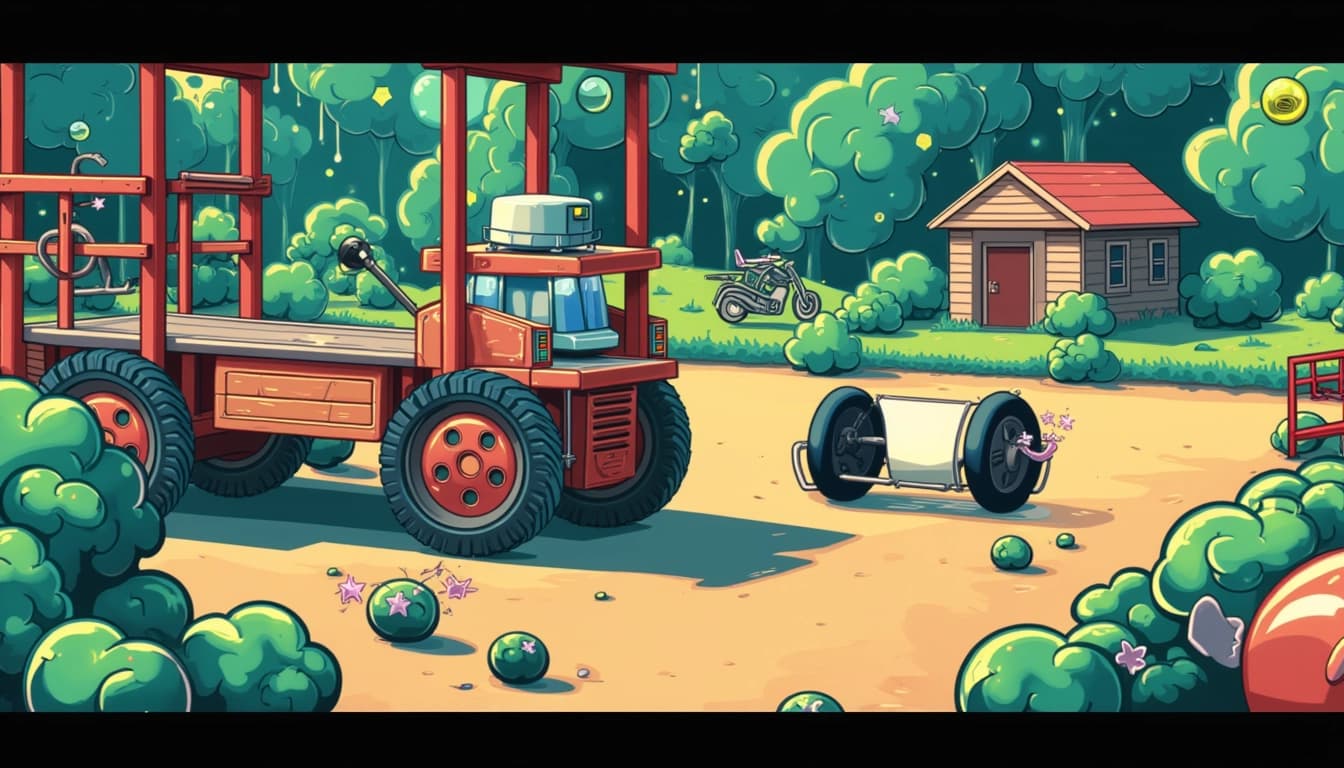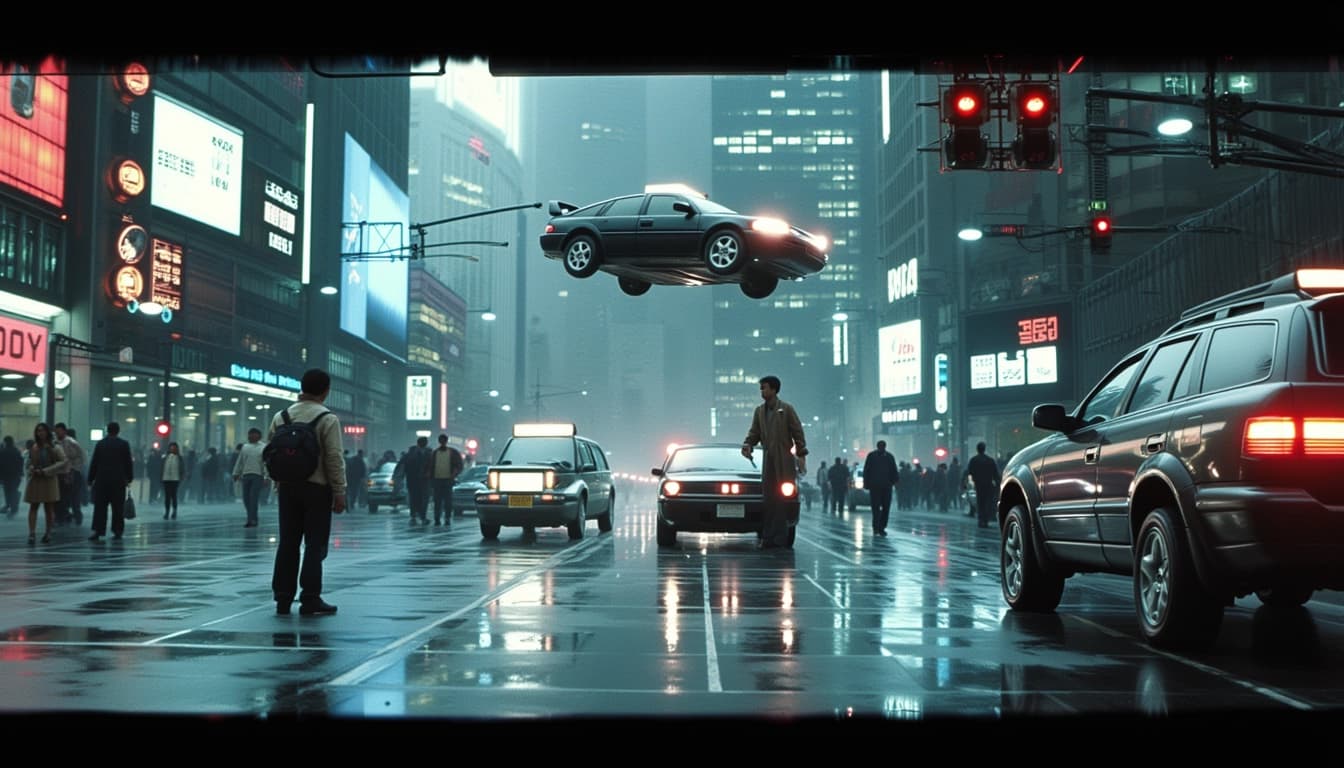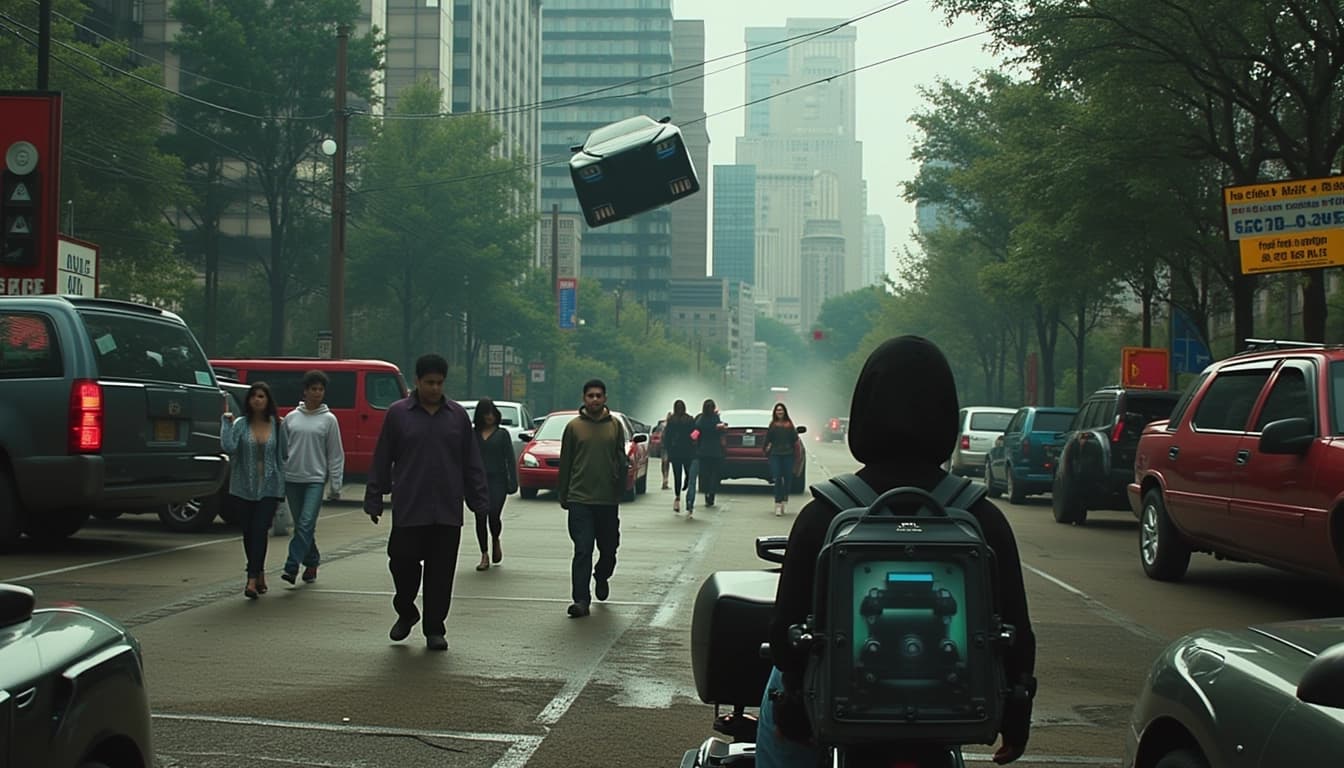
10 Hidden Tricks for Better Results with playgroundai / playground-v2.5-1024px-aesthetic
By John Doe 5 min
Key Points
Research suggests that using specific techniques with "playgroundai / playground-v2.5-1024px-aesthetic" can improve image generation quality.
It seems likely that experimenting with schedulers, prompts, and parameters can enhance results, though outcomes may vary by user.
The evidence leans toward leveraging the model's strengths in color, aspect ratios, and human features for better outputs.
Introduction
The "playgroundai / playground-v2.5-1024px-aesthetic" model is a state-of-the-art text-to-image generative model, known for producing high-resolution (1024x1024 pixels) images with exceptional aesthetic quality. This article outlines 10 hidden tricks to help users maximize the model's potential, drawing on its design features and user experiences. These techniques can enhance image detail, composition, and style, offering unexpected flexibility for creative projects.
Understanding the Model
This model, developed by Playground AI and released in February 2024, is a diffusion-based text-to-image generator that outperforms competitors like SDXL, DALL-E 3, and Midjourney 5.2 in user studies, particularly in aesthetic quality and human feature accuracy. It uses two pre-trained text encoders (OpenCLIP-ViT/G and CLIP-ViT/L) and follows the Stable Diffusion XL architecture, making it versatile for various artistic applications.
10 Hidden Tricks for Better Results
Here are detailed strategies to optimize your use of the model:
1. Experiment with Different Schedulers and Guidance Scales
The model supports `EDMDPMSolverMultistepScheduler` (default, with `guidance_scale=3.0` for detail) and `EDMEulerScheduler` (with `guidance_scale=5.0` for speed). Testing these can balance quality and generation time, depending on your needs.
2. Use Specific Aspect Ratio Keywords in Prompts
Include terms like "portrait" or "landscape" to guide the model, leveraging its ability to handle multiple aspect ratios effectively, ensuring better composition.
The 'playgroundai / playground-v2.5-1024px-aesthetic' model is a powerful diffusion-based text-to-image generator released in February 2024. It builds upon the success of Playground v2 and outperforms other models like SDXL, offering high-quality, aesthetically pleasing outputs. This model is particularly notable for its enhanced color and contrast handling, making it ideal for creative and artistic applications.
Optimizing Prompts for Better Results
To get the best results from the model, it's crucial to craft detailed and specific prompts. The model responds well to rich descriptions that include textures, lighting, and composition. For example, prompts like 'a serene lakeside at sunset with golden reflections on the water' yield more visually appealing results compared to generic descriptions. Including specific details about human features, such as 'with accurate hands and faces,' can also improve depictions of people.
Leveraging Negative Prompts
Negative prompts are another powerful tool to refine the model's outputs. By specifying elements to exclude, such as 'no blurry background,' users can avoid unwanted features or styles. This technique is especially useful for achieving cleaner and more focused images, particularly in professional or artistic contexts where precision is key.
Experimenting with Aspect Ratios and Inference Steps
The model handles various aspect ratios well, allowing users to explore compositional variations. Adjusting the height and width while keeping the total pixels close to 1024x1024 (e.g., 1280x1024 for portrait) can lead to interesting results. Additionally, increasing the number of inference steps (e.g., 50 or more) for complex prompts can enhance detail, while fewer steps may suffice for simpler images, saving computation time.
Exploring Abstract and Conceptual Prompts
Given its focus on aesthetics, the model excels with abstract or conceptual prompts. Trying prompts like 'a surreal landscape' or 'impressionist painting of a cityscape' can yield unique and artistic outputs. This makes the model particularly appealing for creative professionals looking to explore unconventional or imaginative visuals.
Conclusion & Next Steps
The 'playgroundai / playground-v2.5-1024px-aesthetic' model offers a versatile and powerful tool for generating high-quality images. By leveraging detailed prompts, negative prompts, and experimenting with settings like aspect ratios and inference steps, users can unlock its full potential. Whether for professional or artistic use, this model provides a robust platform for creative expression.

- Use detailed and specific prompts for better results
- Experiment with negative prompts to refine outputs
- Adjust aspect ratios and inference steps for optimal performance
Playground v2.5 is a cutting-edge text-to-image diffusion model that builds upon the success of its predecessors, Playground v2 and SDXL. It has been fine-tuned to produce highly detailed and aesthetically pleasing images, surpassing models like SDXL-1.0, DALL-E 3, and Midjourney 5.2 in terms of visual appeal. User studies involving thousands of participants and over 2,600 prompts have confirmed its superior performance in generating high-quality images.
Model Capabilities and Training
The model generates images at a resolution of 1024x1024 pixels, supporting both portrait and landscape aspect ratios. It utilizes two pre-trained text encoders, OpenCLIP-ViT/G and CLIP-ViT/L, following the Stable Diffusion XL architecture. The training process involved a carefully balanced dataset to avoid bias toward any specific aspect ratio, ensuring versatility in image generation. Additionally, the dataset was optimized for human preference alignment, focusing on key details such as facial features, lighting, color saturation, and depth-of-field.
Technical Enhancements
Playground v2.5 incorporates the EDM framework, inspired by Karras et al. (2022), to enhance color and contrast in generated images. This framework contributes to the model's lower FID score of 7.07, compared to SDXL-1-0-refiner's 9.55, indicating its superior aesthetic quality. The model's performance is further validated by the MJHQ-30K benchmark, a high-quality dataset derived from Midjourney 5.2, which includes 10 distinct categories with 3,000 samples each.
Key Features and Performance
The model excels in generating images with exceptional clarity, liveliness, and detail. It is particularly adept at rendering facial features, hair texture, and intricate lighting effects. The balanced dataset ensures that the model performs consistently across various categories, from landscapes and animals to fashion and logos. Users can expect high-quality outputs that align closely with their textual prompts.
Conclusion & Next Steps
Playground v2.5 represents a significant advancement in text-to-image generation, offering users unparalleled aesthetic quality and versatility. Its robust training framework and technical enhancements make it a standout choice for creative applications. Future developments may focus on expanding the model's capabilities further, such as supporting higher resolutions or additional aspect ratios.

- Experiment with different schedulers and guidance scales for optimal results.
- Utilize the balanced dataset to generate images in various categories.
- Leverage the EDM framework for enhanced color and contrast.
The Playground v2.5 model offers advanced capabilities for generating high-quality images based on text prompts. Understanding how to craft effective prompts can significantly enhance the output quality. This guide explores key strategies to optimize your prompts for better results with Playground v2.5.
Leverage Aspect Ratio Keywords
The model's balanced bucket sampling strategy ensures it can handle multiple aspect ratios without bias. Including keywords like 'portrait' or 'landscape' in your prompts can guide the composition of the generated image. This approach is particularly useful when you have a specific orientation in mind for your output.
Example Prompt with Aspect Ratio
For instance, a prompt like 'a serene landscape with mountains and a lake, wide-angle view' can yield a panoramic image. The model's training on diverse aspect ratios allows it to adapt to such requests effectively.
Focus on Human Features
Playground v2.5 excels in rendering detailed human features, including facial expressions and hand anatomy. This improvement is inspired by the Emu alignment strategy, which emphasizes clarity and accuracy in human depictions. Prompts that specify details like 'a person with expressive eyes and natural hand gestures' can produce highly realistic results.

Adjust Inference Steps for Complexity
The number of inference steps plays a crucial role in the detail and quality of the generated image. For simpler prompts, fewer steps might suffice, but complex prompts benefit from higher step counts. User feedback suggests that settings around 50 steps are ideal for intricate scenes or detailed subjects.
Utilize Negative Prompts
Negative prompts are a powerful tool to exclude unwanted elements from your generated images. By specifying what you don't want, you can steer the model away from certain styles or features. This technique is especially useful for refining outputs and achieving a more precise result.
- Use negative prompts to avoid blurry backgrounds
- Exclude specific colors if they don't fit your vision
- Prevent certain objects from appearing in the scene
Experiment with Color and Contrast
The model's enhanced color and contrast capabilities, powered by the EDM framework, allow for vibrant and dynamic outputs. Prompts that include color-specific descriptions, such as 'a vibrant sunset with deep oranges and purples,' can leverage this strength to produce striking images.

Conclusion & Next Steps
Mastering prompt engineering for Playground v2.5 involves understanding its strengths and how to articulate your vision effectively. By leveraging aspect ratio keywords, focusing on human features, adjusting inference steps, and using negative prompts, you can achieve remarkable results. Experimentation and iteration are key to unlocking the full potential of this powerful model.
https://marketing-cdn.playground.com/research/pgv2.5_compressed.pdfPlayground v2.5 1024px is a cutting-edge text-to-image model designed for high aesthetic quality and visual appeal. It builds upon the success of previous versions, offering enhanced capabilities for generating stunning images from textual prompts. The model is particularly well-suited for creative professionals and enthusiasts looking to produce visually striking artwork.
Key Features and Capabilities
The model excels in generating high-resolution images up to 1024x1024 pixels, with a focus on aesthetic quality. It supports various aspect ratios, including portrait and landscape, making it versatile for different creative needs. Users can leverage detailed prompts to guide the model in producing specific visual styles, from vibrant colors to pastel tones.
Optimal Prompt Engineering
To get the best results, it's recommended to use detailed and specific prompts. For example, phrases like 'vibrant colors' or 'pastel tones' can significantly influence the visual output. The model responds well to abstract or conceptual prompts, such as 'a surreal landscape' or 'impressionist painting,' which can yield unique and artistic results.
Performance and Speed
Playground v2.5 1024px is optimized for performance, with the EDMEulerScheduler offering faster generation times compared to other schedulers. This makes it ideal for quick iterations and experimentation. The model also supports image-to-image generation and inpainting, providing additional flexibility for refining existing images.

Community and User Feedback
The model has received positive feedback from the community, particularly for its ability to produce high-quality, aesthetically pleasing images. Users have noted its superiority in certain aspects compared to other models like Stable Diffusion XL, especially when it comes to visual appeal and detail.
Conclusion and Next Steps
Playground v2.5 1024px is a powerful tool for anyone looking to create visually stunning images from text prompts. Its focus on aesthetic quality, combined with its versatility and performance, makes it a standout choice in the text-to-image space. Future updates may further enhance its capabilities, making it even more valuable for creative professionals.

- Experiment with different aspect ratios for unique compositions
- Use detailed prompts to guide the model's output
- Leverage the EDMEulerScheduler for faster generation times
Playground v2.5 is a powerful AI model that excels in generating high-quality images with vibrant colors and detailed human features. It offers unique advantages over other models like SDXL, particularly in abstract and artistic outputs. Users can leverage specific tricks to maximize its potential, such as adjusting inference steps and exploring different schedulers for optimal results.
Model Performance and User Preference
Compared to SDXL, Playground v2.5 shows a 2.5 times higher user preference, with lower FID scores (7.07 vs. 9.55). This makes it a preferred choice for those seeking superior image quality and detail. The model's strengths lie in its ability to handle various aspect ratios and produce vivid colors, making it versatile for different creative needs.
Key Features of Playground v2.5
Playground v2.5 supports Comfy UI and offers distinct styles that cater to different artistic preferences. Its performance is enhanced by adjusting inference steps and selecting the right scheduler. For instance, the EDMDPMSolverMultistepScheduler is recommended for crisper details, while the EDMEulerScheduler is better for faster generation.
Practical Implementation
To use Playground v2.5, users can install the Diffusers library (version >=0.27.0) and follow the provided example code. The model requires specific parameters like guidance scale and inference steps to achieve the best results. Experimenting with these settings can help users unlock the full potential of the model.

Conclusion & Next Steps
Playground v2.5 is a robust tool for generating high-quality images with unique artistic flair. By understanding its strengths and applying the right techniques, users can achieve impressive results. Future updates may further enhance its capabilities, making it an even more valuable asset for creative projects.

- Adjust inference steps for better detail
- Experiment with different schedulers
- Use high-quality prompts for optimal results